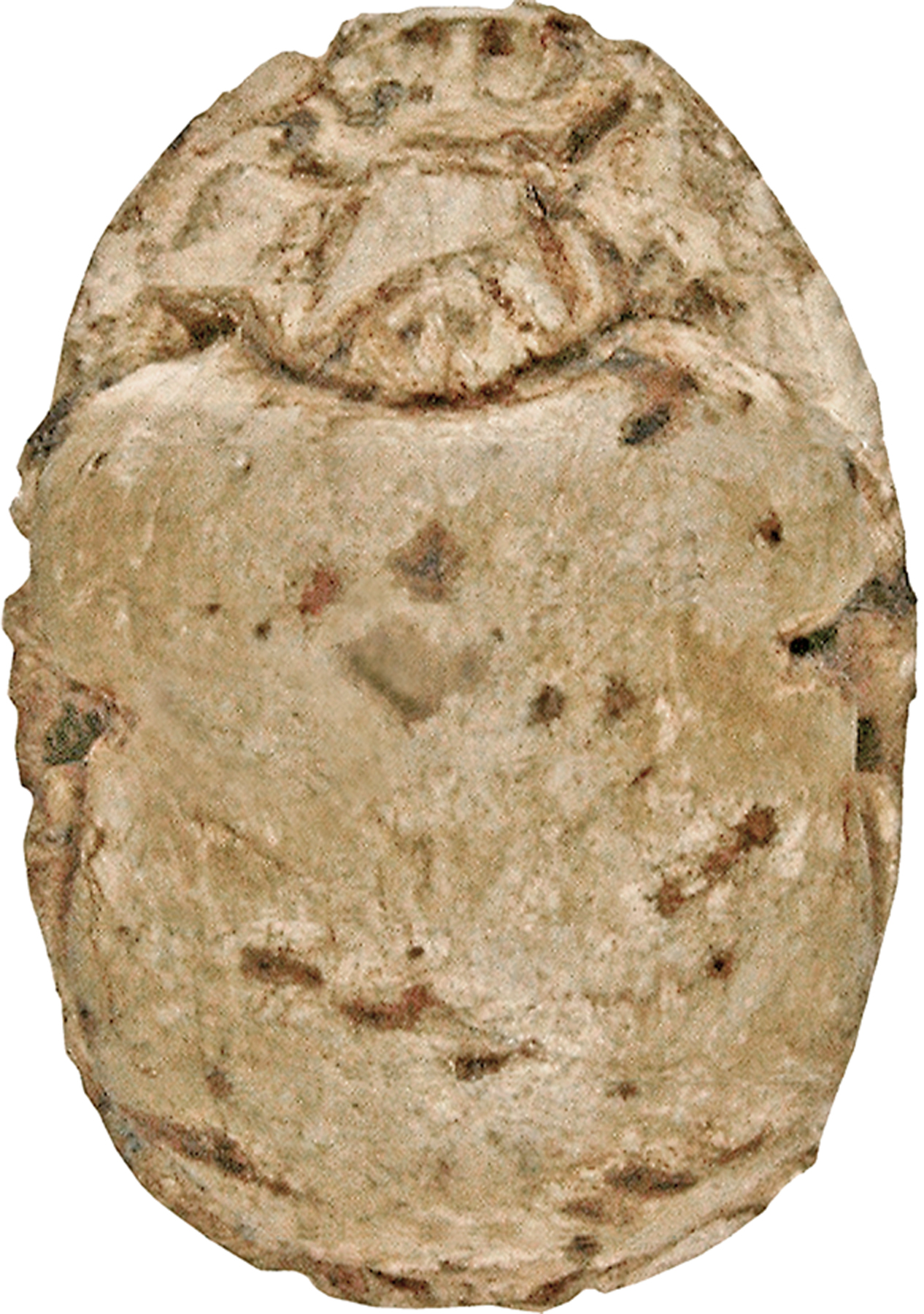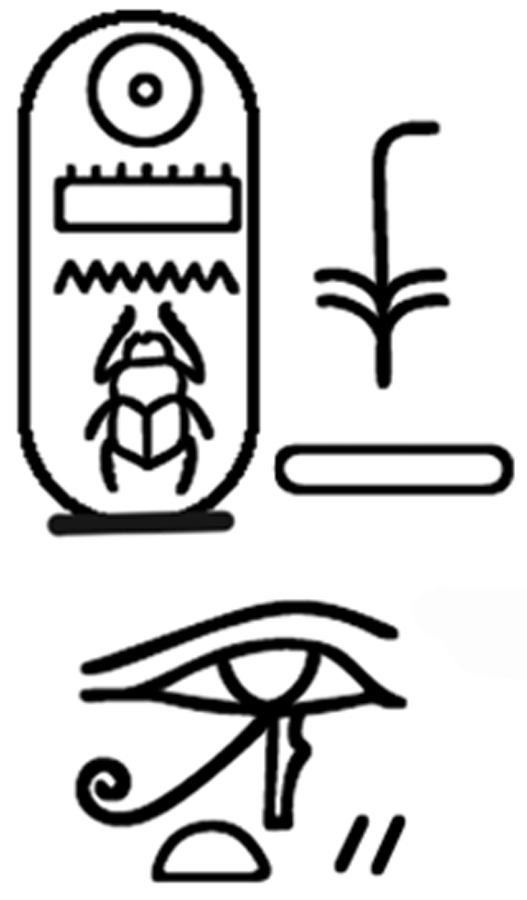Scarab with the Cartouche of Thutmosis III (1479-1425 BC)
(Ancient Egypt and Nubia )
This steatite scarab is inscribed with the throne name of Thutmosis III (1479-1425 BC) in sunk relief technique on the flat underside. The top of the scarab is high and has a simple carved design. The workmanship is slightly rough, and some of the details are out of shape.
The piece functioned as an individualized amulet and was originally mounted or threaded. The amulet should ensure royal protection and support its owner, and make him as successful in warding against dangers as the king. The scarab was produced after the death of Thutmosis III, who was most probably understood as a protective god and successful model of divine kingship. The combination of different royal manifestations with protective renewal and good luck elements intends to assure the all-inclusive magic power of the amulet.
The body and posture of the animal figure in the lower round of the scarab is similar to a donkey, but the long horns, which are too long to be ears, make it more likely that it represents the royal bull. Images of bulls on scarabs are mostly part of a motif showing the animal trampling on an enemy.
Inscription
Provenance
Provenance (from the French provenir, 'to come from/forth') is the chronology of the ownership, custody, or location of a historical object. Learn more about provenance at the Walters.
Henry Walters, Baltimore, 1911 (?) [mode of acquisition unknown]; Walters Art Museum, 1931, by bequest.
Geographies
Egypt (Place of Origin)
Measurements
H: 1/2 x W: 3/4 x L: 1 1/16 in. (1.2 x 1.9 x 2.7 cm)
Credit Line
Acquired by Henry Walters, 1911 (?)
Location in Museum
Not on view
Accession Number
In libraries, galleries, museums, and archives, an accession number is a unique identifier assigned to each object in the collection.
In libraries, galleries, museums, and archives, an accession number is a unique identifier assigned to each object in the collection.
42.20












